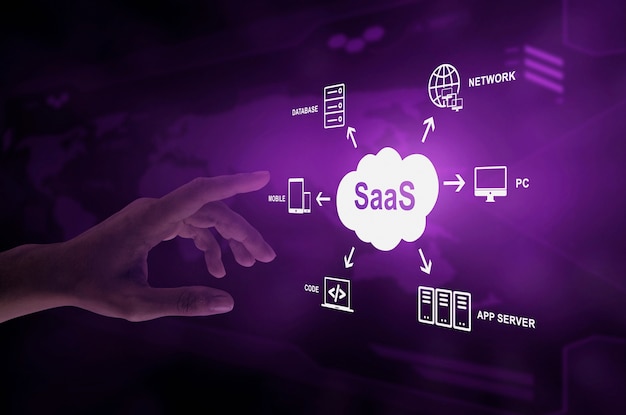In today’s competitive digital landscape, SaaS (Software as a Service) companies are increasingly turning to content marketing to drive growth and customer engagement. However, to stand out in a crowded market, simply producing content isn’t enough. Leveraging data and analytics has become crucial in crafting effective content marketing strategies that resonate with audiences and drive conversions. Let’s dive into how data and analytics can enhance SaaS content marketing.
Understanding SaaS Content Marketing
Definition of SaaS Content Marketing
SaaS Content Marketing involves creating and distributing valuable, relevant, and consistent content to attract and retain a clearly defined audience — ultimately driving profitable customer action. It’s about providing solutions and insights that address the pain points of potential and existing customers.
Key Goals of SaaS Content Marketing
The primary goals of SaaS content marketing include:
- Building brand awareness
- Generating leads
- Nurturing prospects
- Driving customer engagement and retention
- Establishing thought leadership
The Power of Data in Content Marketing
Importance of Data in Marketing
Data is the backbone of modern marketing. It provides insights into customer behaviors, preferences, and needs, enabling marketers to make informed decisions. By understanding what your audience wants and how they interact with your content, you can tailor your strategies to meet their expectations.
Types of Data Essential for SaaS Content Marketing
To enhance your SaaS content marketing, focus on these types of data:
- Customer demographics
- User behavior analytics
- Market trends
- Competitive analysis
Collecting Relevant Data
Customer Demographics
Understanding the demographics of your audience is the first step in creating targeted content. Collect data on age, gender, location, occupation, and other relevant factors.
User Behavior Analytics
Analyze how users interact with your content. Look at metrics like time spent on pages, click-through rates, and conversion rates to gauge content effectiveness.
Market Trends
Stay updated with industry trends. Use market research reports, social media trends, and news to inform your content strategy.
Competitive Analysis
Analyze your competitors’ content strategies. Identify their strengths and weaknesses to find opportunities for differentiation.
Analyzing Data for Insights
Data Analysis Techniques
Utilize various data analysis techniques such as segmentation, regression analysis, and cohort analysis to draw actionable insights from your data.
Tools for Data Analysis in Content Marketing
Employ tools like Google Analytics, SEMrush, and HubSpot to gather and analyze data. These tools provide comprehensive insights into your content performance and audience behavior.
Creating Data-Driven Content Strategies
Identifying Target Audience
Use data to identify and understand your target audience. Develop buyer personas based on this data to guide your content creation process.
Content Planning and Scheduling
Plan and schedule your content based on data insights. Use content calendars to organize and streamline your content production.
Personalizing Content Based on Data Insights
Personalization is key in modern marketing. Use data to create personalized content that speaks directly to the needs and interests of your audience.
Optimizing Content for SEO
Keyword Research Using Data
Conduct keyword research to identify terms your audience is searching for. Use tools like Ahrefs and SEMrush to find high-volume, low-competition keywords.
On-Page and Off-Page SEO Tactics
Optimize your content with on-page SEO tactics such as meta tags, headings, and keyword placement. Enhance your off-page SEO by building quality backlinks.
Monitoring SEO Performance with Analytics
Track your SEO performance using tools like Google Analytics and Moz. Monitor metrics such as organic traffic, bounce rate, and keyword rankings to assess effectiveness.
Leveraging Customer Data
Understanding Customer Journey
Map out the customer journey to understand how customers interact with your content at different stages. Use this insight to create content that guides them through the sales funnel.
Using Customer Feedback for Content Improvement
Collect and analyze customer feedback to identify areas for improvement. Use surveys, reviews, and direct feedback to refine your content.
Case Studies and Testimonials
Leverage case studies and testimonials to build trust and credibility. Showcase real-world examples of how your product has solved customer problems.
Enhancing User Engagement
Analyzing Engagement Metrics
Track engagement metrics such as likes, shares, comments, and time spent on content. Use this data to understand what resonates with your audience.
Interactive and Personalized Content
Create interactive content like quizzes, polls, and webinars to boost engagement. Personalize content based on user behavior and preferences.
Utilizing Social Media Analytics
Use social media analytics to track the performance of your content on various platforms. Analyze metrics such as reach, engagement, and follower growth to refine your strategy.
Content Performance Measurement
Key Performance Indicators (KPIs)
Identify KPIs that align with your content marketing goals. Common KPIs include website traffic, lead generation, conversion rates, and customer retention.
Tracking Content Effectiveness
Use analytics tools to track the performance of your content. Monitor metrics such as page views, time on page, and conversion rates to measure effectiveness.
Adjusting Strategies Based on Performance Data
Continuously refine your content strategy based on performance data. Use A/B testing and other techniques to identify what works best for your audience.
Tools for Data-Driven Content Marketing
Google Analytics
A powerful tool for tracking website traffic and user behavior. Provides detailed insights into how visitors interact with your content.
SEMrush
An all-in-one marketing toolkit that offers SEO, content marketing, and competitive research capabilities.
HubSpot
A comprehensive platform for inbound marketing, sales, and customer service. Helps in managing and analyzing content performance.
Other Notable Tools
Consider tools like Ahrefs, Moz, and BuzzSumo for additional insights and analytics.
Challenges in Data-Driven Content Marketing
Data Privacy Concerns
With increasing focus on data privacy, ensure compliance with regulations like GDPR and CCPA. Be transparent about data collection and usage.
Integrating Data from Multiple Sources
Combining data from various sources can be challenging. Use data integration tools to consolidate information and gain a holistic view.
Keeping Up with Changing Trends
The digital landscape is constantly evolving. Stay updated with the latest trends and adjust your strategies accordingly.
Case Studies of Successful SaaS Companies
Examples of SaaS Companies Excelling in Data-Driven Content Marketing
Companies like HubSpot, Slack, and Zendesk have successfully leveraged data-driven content marketing to achieve growth. Analyze their strategies to learn valuable lessons.
Lessons Learned from These Companies
Key takeaways include the importance of continuous data analysis, personalization, and staying ahead of industry trends.
Future Trends in SaaS Content Marketing
AI and Machine Learning in Content Marketing
AI and machine learning are transforming content marketing. Use these technologies for predictive analytics, content personalization, and automation.
Predictive Analytics
Leverage predictive analytics to forecast trends and customer behaviors. Use these insights to stay ahead of the competition.
Emerging Tools and Technologies
Stay updated on emerging tools and technologies in content marketing. Explore innovations that can streamline processes and enhance engagement.
Conclusion
In conclusion, leveraging data and analytics is not just beneficial but essential for SaaS content marketing success. By harnessing the power of data, SaaS companies can create targeted, personalized content that resonates with their audience, drives engagement, and ultimately boosts conversions. It’s about understanding your customers on a deeper level and using insights to continuously refine and optimize your content strategies.
For SaaS businesses looking to stay competitive in today’s digital age, integrating data-driven practices into their content marketing efforts is key. From analyzing customer behavior to optimizing SEO and measuring performance, data-driven decisions pave the way for sustainable growth and customer satisfaction.




